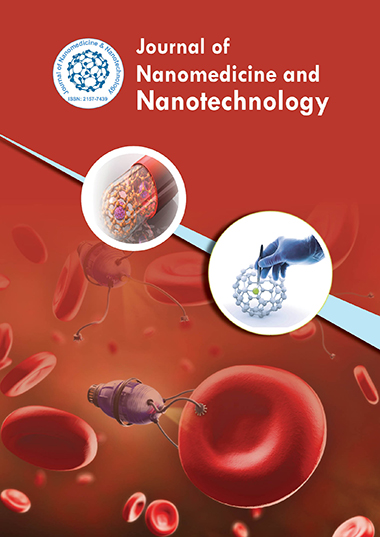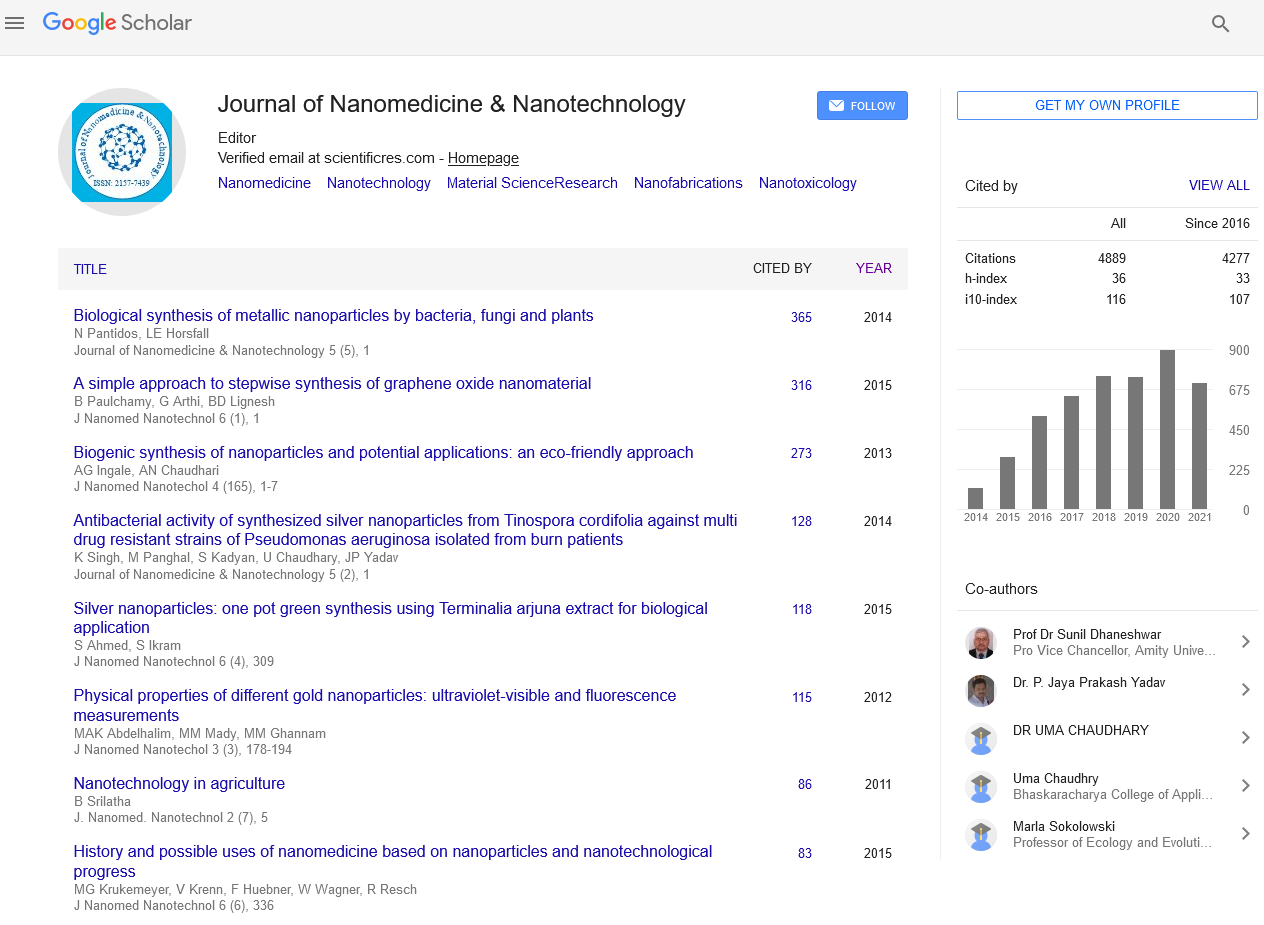Indexed In
- Open J Gate
- Genamics JournalSeek
- Academic Keys
- JournalTOCs
- ResearchBible
- China National Knowledge Infrastructure (CNKI)
- Scimago
- Ulrich's Periodicals Directory
- Electronic Journals Library
- RefSeek
- Hamdard University
- EBSCO A-Z
- OCLC- WorldCat
- SWB online catalog
- Virtual Library of Biology (vifabio)
- Publons
- MIAR
- Scientific Indexing Services (SIS)
- Euro Pub
- Google Scholar
Useful Links
Share This Page
Journal Flyer

Open Access Journals
- Agri and Aquaculture
- Biochemistry
- Bioinformatics & Systems Biology
- Business & Management
- Chemistry
- Clinical Sciences
- Engineering
- Food & Nutrition
- General Science
- Genetics & Molecular Biology
- Immunology & Microbiology
- Medical Sciences
- Neuroscience & Psychology
- Nursing & Health Care
- Pharmaceutical Sciences
A review of physical and chemical routes to top-down nanofabrication
4th International Conference on Nanotek & Expo
December 01-03, 2014 DoubleTree by Hilton Hotel San Francisco Airport, USA
Ramesh K Agarwal
Scientific Tracks Abstracts: J Nanomed Nanotechnol
Abstract:
In fabrication of nanoscale materials, the two strategies known as the bottom-up and top-down fabrication can be employed. The bottom-up approach constructs nanomaterials from basic building blocks like atoms or molecules while the top-down approach produces nanostructures by deconstructing larger size materials with the use of lithographic tools (physical topdown route) or through chemical-based processes (chemical top-down route). This review summarizes the various top-down nanofabrication methods using both the routes. In the physical route of top-down fabrication are the standard photolithography techniques using the ultraviolet light radiation, electron beam or ion beam; this approach has been widely used in the microelectronics industry. However it has several limitations ? (a) it is expensive, (b) it can be applied to limited set of materials making it less accessible to most chemists, bio-chemists and biologists who use dirty organic systems, (c) it has no control over the surface chemistry, and (d) it is not applicable to non-planar surfaces. In recent years there has been an alternative route known as the soft lithography which is a collection of techniques based on printing, molding and embossing with an elastomeric stamp. It provides access to three-dimensional and curved structures, tolerates a wide variety of materials, generates well-defined and controllable surface chemistries, and is generally compatible with biological applications. It has been found useful for a number of applications that include cell biology, microfluidics, lab-on-a-chip, micro-electromechanical systems and flexible electronics/photonics. The chemical route to top-down nanofabrication can generate nanoporous materials and ordered arrays of nanostructures with three-dimensional features. The chemical top-down routes include (a) templated etching, (b) selective dealloying, (c) anisotropic dissolution, and (d) thermal decomposition. These emerging chemical-based nanofabrication tools are opening up new avenues in the creation of functional nanostructures with a wide array of applications.
Biography :
Ramesh K Agarwal is the William Palm Professor of Engineering at Washington University in St. Louis. From 1994 to 2001, he was the Sam Bloomfield Distinguished Professor and Executive Director of the National Institute for Aviation Research at Wichita State University in Kansas. From 1978 to 1994, he worked in various scientific and managerial positions at McDonnell Douglas Research Laboratories in St. Louis. He became the Program Director and McDonnell Douglas Fellow in 1990. He received PhD in Aeronautical Sciences from Stanford University in 1975, M.S. in Aeronautical Engineering from the University of Minnesota in 1969 and BS in Mechanical Engineering from Indian Institute of Technology, Kharagpur, India in 1968. He is the author and coauthor of over 500 publications and serves on the editorial board of 20+ journals. He has given many plenary, keynote and invited lectures at various national and international conferences worldwide. He is a Fellow of AAAS, ASME, AIAA, IEEE, SAE and SME.


